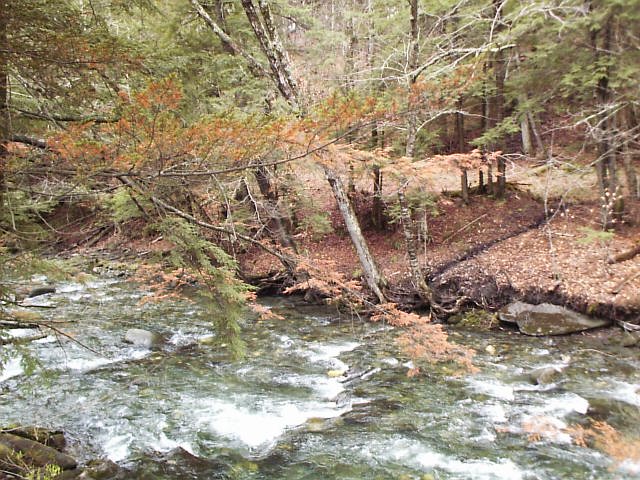
photo by Gerry Hawkes - May 2000
What Is Happening To The
Eastern Hemlock?
(Tsuga canadensis)

photo by Gerry Hawkes - May 2000
A browning hemlock branch. Browning of hemlocks is becoming more and more widespread, often most severe where soils are wet. In this photo, taken near Woodstock, Vermont, the hemlock is growing on a bank above a stream.
photo by Gerry Hawkes - May 2000Here an entire small tree is browning. In addition to browning, hemlocks are exhibiting widespread, chlorosis (a yellowing of the needles), and premature needle drop that thins the crowns. There are no reports of Hemlock Woolly Adelgid or Hemlock Looper affecting any trees in this region of Vermont.
photo taken by Gerry Hawkes in East Randolph, Vermont - February 2003
The browning and dying of the hemlocks becomes more severe and widespread each year. By February of 2003 large whole trees were rapidly turning brown and dying. In the late 1990's only small branchlets were seen yellowing and browning.
No hemlock wooly adelgid or hemlock looper has been observed.
The dying sugar maple top on the right is typical of many of the hardwoods growing in the same area as the browning and dying hemlocks.
. . . back to AIR POLLUTION AND FOREST HEALTH NOTES FROM AROUND THE WORLD
. . . to Eco Systems' Home Page
Contact Gerry Hawkes: ghawkes@eco-systems.org